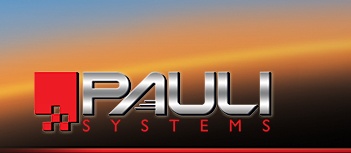In these days of tightened budget customers sometimes ask us why a Pauli Systems RAM 31 blast/stripping cabinet is better than competitors' offerings. Following are my thoughts:
Pauli Systems RAM 31 Features Compared to Competitors
1. Overall design and construction is made to serve for decades. A simple comparison of weight tells a story of ruggedness: a RAM 31 cabinet and power pack combined weigh 3,175 pounds, double the weight of some competitors' offerings.
2. The Pauli Systems Blast Generator--the business end: cleaning a surface with a controlled process.
- Pressure blast system, vs. many competitors offer suction which does not satisfactorily remove aerospace type coatings
- Patented FanBlast Nozzle removes coatings at double the rate of competitors' nozzles. Source: Southwest Research Institute report commissioned by USAF Wright Patterson.
- Dual blast hose nozzle system: FanBlast for larger work and a delicate 1/4" diameter PTX nozzle for sculpting coatings and cleaning complex surfaces. The PTX is mated with a "noodle flex" 1/2" diameter blast hose for the easiest nozzle maneuvering in the industry.
- 1.5 cubic foot pressure vessel (blast generator), compared to competitors' 1.0 cubic foot capacity. Blast longer without stopping with the Pauli system.
- The Pauli blast generator has a 60-degree cone bottom with aerated discharge area vs. 50 degree with no aeration for competitors. 50 degree slopes will flow plastic media when it is new, but will not do so smoothly and completely with broken down media. Only Pauli Systems provides a smooth no-pulsing flow through the nozzle with complete discharge of media from the generator.
- M-15 media mass flow metering valve at the bottom of the aerated area in the blast generator has horizontal stainless steel metering discs for the best control of media flow in the industry. Additionally there is a cleanout plug above the metering discs for removal of debris that may enter the system and fail to flow through the media metering valve. Competitors have metering discs at 45 degree to the horizontal, which give pulsing flow with plastic media that has an angle of repose of nearly 60 degrees.
- Magnetic separator at the discharge to collect ferrous particles at the moment they are about to enter the blast stream. This prevents pitting of aerospace structure and components and is not a common feature in blast cabinet systems.
- Stripping blast flow is controlled on-off by a Feathertouch foot control, with safety lock. This foot valve pilots operation of an extra-large all brass RCV-100 1" air inlet valve to the blast generator, insuring rapid pressurization of the pressure vessel and quick response to the Operator's command. Competitors often put full air flow through a 1/2" foot valve, which will respond slowly to Operator commands and prevent use of larger nozzles as supplied by Pauli Systems.
- Massive 1-1/4" exhaust valve for instant depressurization (stop blasting) on Operator command. This also, and importantly, prevents back flow in the piping strings and loading of the blast hose during a (competitor's) slow shutdown.
3. Stripping/blast enclosure (the cabinet): Where the business end does its magic under control of the Operator.
- 10 gauge cold rolled steel enclosure withstands abrasive action far longer than competitive units, some of which are a tinny 16 gauge.
- Brilliant, explosion proof, four-tube fluorescent lighting, giving 260 foot-candles of Operator-friendly illumination. There is no brighter cabinet on the market.
- 15" high by 30" wide Operator view window offers unparalled visual access to the work piece.
- 900 CFM of ventilation air sweeps over the work piece and down, moving dust away from the Operator's visual field.
- Front top mounted control panel has a piloted air pressure regulator and gauge vs. competitors' units that require the Operator to move around to the rear of the unit for access to the blast generator's pressure regulator or stoop down to a floor level air pressure regulator and gauge.
- The front control panel has an on-off light switch and pulse control buttons for instant dust collector cartridge cleaning without interrupting the stripping/blasting process.
- Stripping/blasting hose enter at the top "falling to hand," for ease of operator grip vs. floor entry hoses on some competition's enclosures.
4. Power Pack: where used media and debris are collected, separated into clean air, reusable media and discards. The reusable media is returned to the blast generator for reuse.
- Twin cartridges, both removable in sacks inside the dust collector enable disposal without ever being exposed to the atmosphere outside the dust collector.
- Highest efficiency cyclone and air wash in the industry, with separate controls for air wash volume and air wash velocity. This feature, unmatched in the industry, ensures that the customer gets maximum use from every pound of blast media purchased.
- Vibratory screen beneath air wash to remove oversize particles, which are removed via and eye-level door.
- Magnetic separator removes ferrous particles prior to blast, another unusual and highly important feature to prevent pitting of aircraft structure and components.
5. The Pauli Systems reputation. As the industry's pioneer, Pauli Systems units have served in production aerospace dry paint stripping use for more than 28 years. RAM 31 machines, which started it all in component stripping, are still in daily used in military and OEM aerospace facilities around the world.
